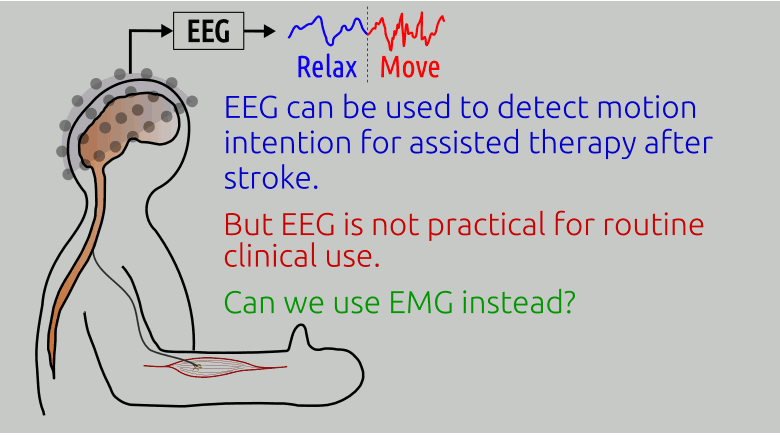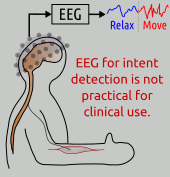
EEG-based brain-computer interface (BCI) has been used to detect movement intention in severely affected stroke patients during assisted therapy, but current EEG-BCI systems are not practical for routine clinical use. If detectable in this population, residual EMG in the target muscles could serve as an alternative for movement intent detection. Thus, we investigated the possibility of using EMG to detect hand/wrist extension movement intention. We tested this idea using data from 30 severely affected chronic stroke patients from a previous randomized control trial using an EEG-BCI for robot-assisted training. The presence of EMG was inferred through a simple EMG detector and was compared with a sensorimotor rhythm based EEG-BCI using only ipsilesional activity. Although these severely handicapped individuals could not open the hand, residual EMG was found in a majority of our subjects: 22 of the 30 (or 73%) patients had sufficiently strong EMG in their finger/wrist extensors when they attempted to move compared to when they were at rest (p < 0.001). Furthermore, in these patients with detectable EMG, there was a poor agreement between the EEG and EMG intent detectors, which indicates that these modalities may be detecting different processes. These results suggest that a large proportion of severely affected stroke patients have residual EMG, which yields a direct and practical way to trigger robot-assisted training. When compared to EEG, a surface EMG interface requires less preparation time, is easier to don and doff, and is more compact in size.

